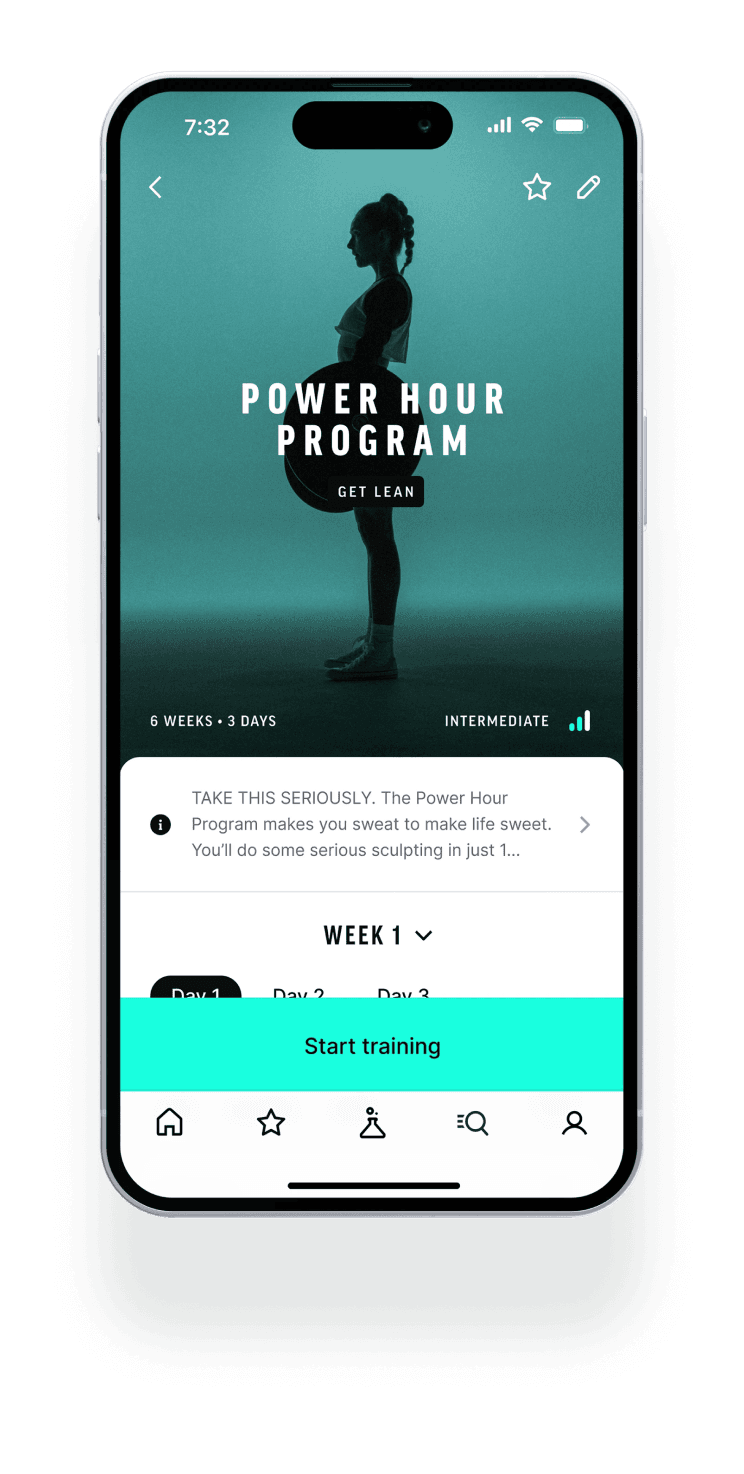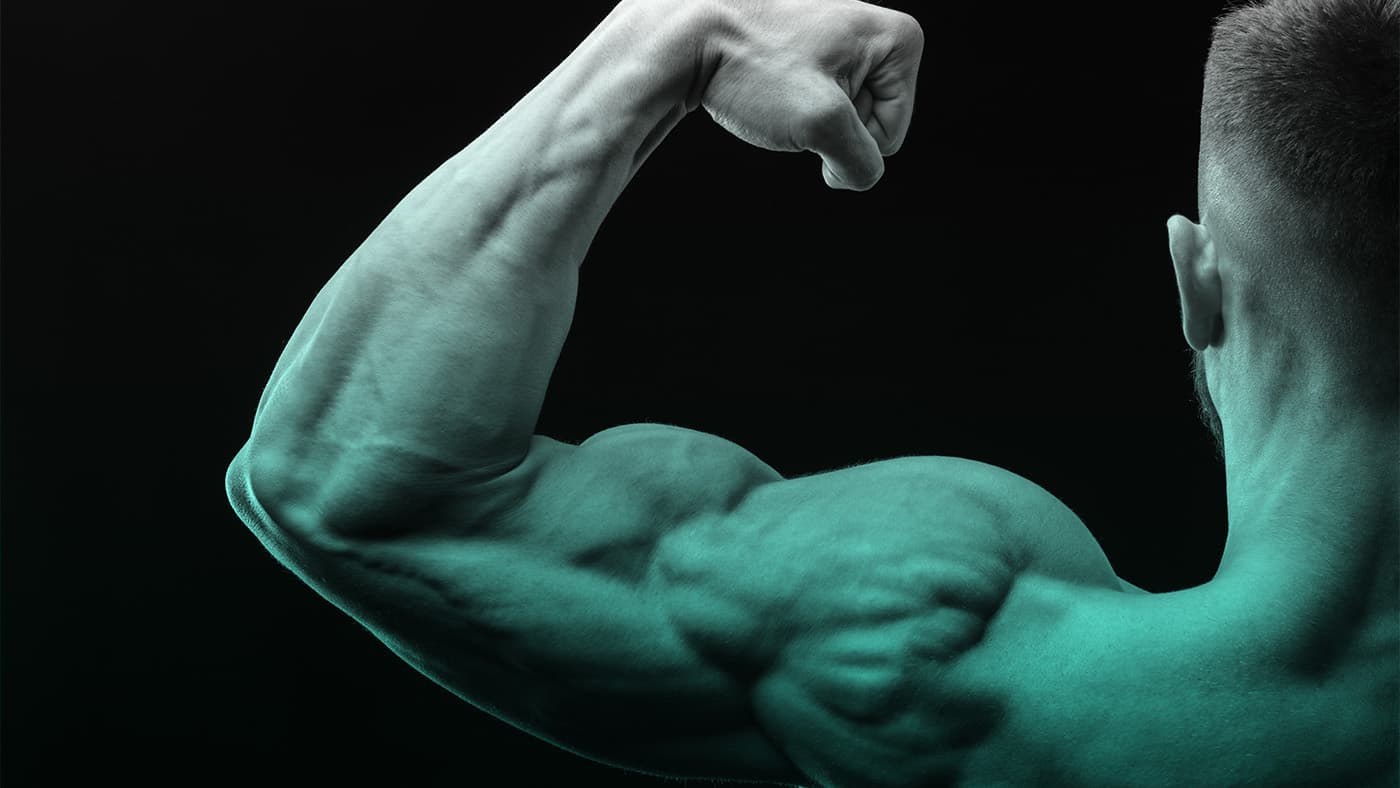How Your Muscles Grow: The Complete Guide to Muscle Building
In this article, you'll find out how your muscles grow and what makes an effective muscle-building workout plan.
At the bottom of the article, you'll also find a link to our Serious Fitness Lab, where you can get your hands on over 100 muscle growth plans. That way, you can jump right in and know for sure that you've got an effective plan for growth.
What Really Makes Muscles Grow?
Let's start with the conclusion before we dive deep. If you're wondering how to bulk up, focus primarily on these three pillars:
Mechanical tension to kickstart protein production (your muscles are mostly made of proteins).
Enough building blocks, especially proteins, for actual protein production.
Sufficient recovery time, ranging from an average of 24 to 72 hours.
Now that you know the secret, let's dive into the details.
Mechanical Tension: The Indispensable Factor
Mechanical tension refers to the stress or pressure your muscles experience when you put them under load, like when weightlifting. It's this tension that signals your muscle cells to start protein synthesis, crucial for muscle growth. Protein synthesis is the creation of new proteins used to repair muscle damage and enlarge your muscles.
How to Achieve the Right Mechanical Tension?
You can effectively achieve mechanical tension that leads to muscle growth in the following ways:
Activate growth-prone muscle fibers: To make effective use of mechanical tension, you need to activate growth-prone muscle fibers. These fibers typically get activated when you train with heavy weights (≥85% of your 1RM) and/or train close to muscle failure. Regardless of the number of repetitions (5 to 20), continue until you have only 1 to 3 reps left in the tank. That means if you do 12 reps, you could probably do 13 to 15 if you pushed to the limit.
Avoid Central Fatigue: Each set not only tires out your muscles but also your central nervous system. The latter signals your muscle fibers to actively participate during a set. If that signal strength diminishes, your set becomes less effective. Therefore, a rest period of 2-3 minutes between sets is advised. If you notice you're doing fewer reps with the same weight, you're probably resting too little and losing training effectiveness.
Metabolic Stress: A Possible Secret Ingredient?
Metabolic stress is the result of exercises that push your muscles to the limit, causing a build-up of metabolites like lactate and hydrogen ions. This gives that burning sensation you sometimes feel in your muscles at the end of a set.
Is Metabolic Stress Necessary for Muscle Growth?
Although the research community is divided on the importance of metabolic stress for muscle growth, it likely contributes to overall muscle growth, but only in combination with mechanical tension.
Muscle Damage: Necessary Evil or Bad for Growth?
After an intense workout, your muscles can suffer microscopic damage. This process triggers inflammation and eventually muscle soreness, known as ‘Delayed Onset Muscle Soreness’ (DOMS).
Is Muscle Damage Necessary for Muscle Growth?
There's some debate about whether muscle damage is necessary for muscle growth. Excessive damage can lead to longer recovery times and may even be counterproductive for muscle growth. A little muscle damage, on the other hand, is an indicator of effective training. If you experience slight soreness, you've activated the muscle growth process and have enough proteins left to make your muscles grow. Simply put, more muscle damage (and thereby more soreness) requires a lot of proteins for recovery to the ‘previous state’. The more proteins used for that, the fewer proteins are left for growth.
Step-by-Step Approach for Maximal Muscle Growth
Follow these steps to increase your muscle mass:
Start with a good warm-up: 5-10 minutes of cardio and some light sets.
Choose your weights carefully: aim for relatively heavy weights that allow you to perform 5 to 15 reps and go near muscle failure on each set.
Number of repetitions and sets: 3-5 sets of 6-12 repetitions per exercise is a good baseline.
Rest between sets: maintain a 2-3 minute rest period.
Change up your workouts: only alter your workouts after 4-8 weeks. The longer you stick to a regimen, the more effective it becomes for muscle growth.
Recovery and nutrition: opt for protein-rich foods and get enough sleep between workouts.
Recap of the Conclusion: How to Smartly Work on Muscle Building?
To be effective in your quest for more muscle mass, you should:
Give your muscles a good dose of mechanical tension to trigger initial protein production.
Ensure enough building materials and (extra) proteins to support recovery.
Schedule sufficient recovery time between your workouts.
There you have it, an extensive guide on how to increase muscle mass and how muscle building works. Time to apply that knowledge and reach your goals.
Related read: The science behind muscle building: how to optimize your muscle growth plan.

100+ Workout Plans for Muscle Growth.
Don't feel like crafting your own muscle-building workout plan? Or just want to make sure you're diving into a truly effective muscle-growth regimen? Then download our Serious Fitness Lab app and kick off with one of the 100+ muscle mass plans. Don't worry, we also help you pick the plan that suits you best. We'll keep track of every pound you lift and every workout you complete. You'll find the link at the bottom or top of this page. Let's get serious.
Frequently Asked Questions About How Muscles Grow
What makes muscles grow faster? Muscles grow faster through progressive overload, combined with sufficient rest and proper nutrition.
How can muscles grow? Muscles grow by a good dose of mechanical tension, optionally combined with metabolic stress and muscle damage during strength training, followed by recovery.
What causes muscles to grow? Your muscles grow from a combination of effective strength training, proper nutrition, and enough rest. Consistency is key. Don't skip workouts and train with full effort.
How long does it take for muscles to grow? The rate at which muscles grow can vary greatly from person to person, but generally, you might start to see noticeable differences in as little as 4-6 weeks with a well-designed program.
Can you still get toned after 40? Yes, it's possible to get toned and muscular even after the age of 40, although it might require more effort and a more targeted training schedule. It's also possible to get even more muscular as you get older. So, head to the gym and start training!
What stimulates muscle growth? Protein intake, adequate sleep, and not too much variation in training stimuli stimulate muscle growth.
How can you get muscular as quickly as possible? Rapid muscle growth requires a well-designed training program, proper nutrition, and consistency in your workouts. Try to train at least three times a week if you want to see faster muscle growth.
How often should you train for muscle growth? Ideally, 3-5 times per week, depending on your training intensity and ability to recover. Even training once or twice a week can stimulate muscle growth, but it will take longer to see results.
What do you feel when your muscles are growing? You aim for light muscle soreness in the days following each workout. This is probably the best indicator that you've had an effective workout. Too much muscle soreness, however, can be counterproductive.
Is cardio harmful to muscle growth? Cardio is not inherently harmful to muscle growth, but it can interfere if done excessively or without adequate nutrition. Cardio burns calories, which might need to be replenished to maintain a caloric surplus for muscle growth. If your goal is to gain muscle, focus on a balanced approach that includes both strength training and moderate cardio.
How important is diet in muscle growth? Diet is crucial for muscle growth. To grow, muscles need sufficient protein for repair and rebuilding. A caloric surplus is often required for significant muscle gains. This means you have to consume more calories than you burn, and these extra calories should come from a balance of protein, carbohydrates, and fats.
What is the role of supplements in muscle growth? Supplements can assist but are not a substitute for a good diet and training program. Protein shakes can provide a convenient source of protein, and creatine and branched-chain amino acids (BCAAs) may offer some benefits. However, the majority of your nutrients should come from whole food
START TRAINING SERIOUSLY
Discover new training methods based on scientific knowledge, improve your form and technique and seriously track your fitness goals.






